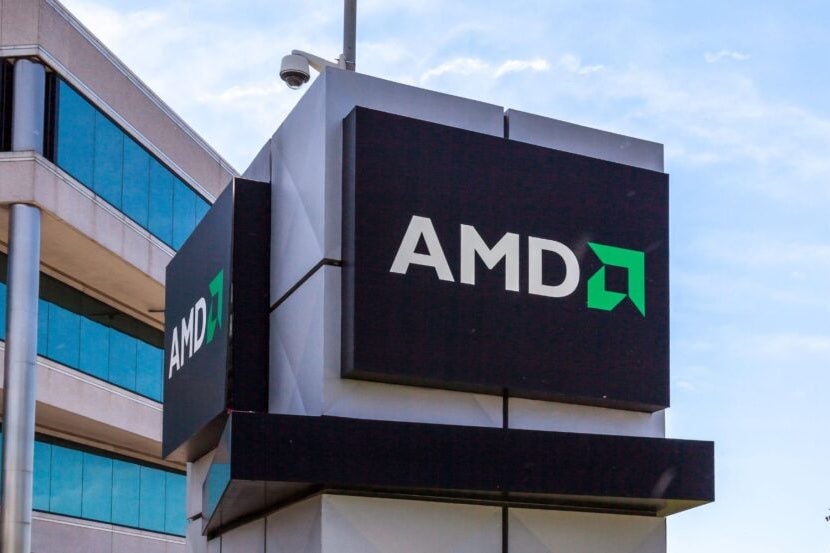AMD’s Strategic Shift: Merging Gaming and Client Segments
Advanced Micro Devices (AMD) is making waves in the technology sector with a significant restructuring of its reporting segments. This strategic shift comes in response to a staggering 59% decline in gaming revenue, compelling the company to merge its gaming and client divisions. This article explores the implications of this move, the reasons behind it, and what it means for AMD’s future in a rapidly changing market landscape.
The Context of AMD’s Revenue Decline
Over the past few years, AMD has positioned itself as a formidable player in the semiconductor industry, particularly in the gaming and client markets. However, the recent sharp decline in gaming revenue has raised alarms among stakeholders. A drop of 59% is not just a statistic; it reflects broader trends in consumer behavior, market competition, and economic conditions.
The gaming industry, once buoyed by the pandemic with soaring demand for gaming consoles and PCs, has now entered a phase of correction. As life returns to normal, many gamers have shifted their spending habits, leading to decreased sales of gaming hardware. Coupled with increased competition from rivals like Nvidia and Intel, AMD found itself at a crossroads, necessitating a reevaluation of its strategic approach.
Implications of Merging Gaming and Client Segments
Merging the gaming and client segments is a bold move that aims to streamline operations and enhance focus. This integration is designed to foster collaboration between the two divisions, allowing AMD to leverage shared technologies, resources, and market insights. Here are some key implications of this strategic shift:
- Enhanced Product Development: By merging the teams, AMD can combine expertise from both segments to develop innovative products that cater to both gamers and general consumers. This could lead to more advanced graphics solutions and processors tailored for a wider audience.
- Cost Efficiency: The merger is expected to reduce operational costs. By consolidating resources, AMD can allocate funds more effectively, focusing on high-impact projects that drive growth.
- Stronger Market Position: With a unified approach, AMD can present a more cohesive brand image to consumers, appealing to both gamers and everyday users. This can help in capturing a larger share of the market.
- Improved Marketing Strategies: A unified segment allows for more targeted marketing campaigns that can resonate with diverse consumer needs, enhancing AMD’s outreach and engagement.
Adapting to Market Dynamics
The tech landscape is ever-evolving, and AMD’s strategic shift is a response to these dynamics. As consumer preferences change, the need for adaptability becomes crucial. The merger reflects AMD’s commitment to staying ahead of the curve, particularly in a post-pandemic world where digital experiences have become paramount.
Moreover, the rise of cloud gaming and the increasing demand for high-performance computing in various sectors present new opportunities for AMD. By merging gaming and client divisions, AMD positions itself to capitalize on these trends effectively. The company can innovate solutions that cater to both casual gamers and professionals seeking powerful computing capabilities.
Challenges Ahead
While the merger presents numerous opportunities, it is not without challenges. Integrating two distinct cultures and operational frameworks can lead to friction. AMD will need to ensure that the merger results in synergy rather than silos. Moreover, there’s the challenge of maintaining focus on product differentiation in a competitive market.
Another challenge lies in the execution of this strategy. Mergers often come with a host of logistical issues, and AMD will need to navigate these carefully to realize the intended benefits. Effective communication and a clear vision will be essential to unite the teams and drive the company forward.
Future Prospects for AMD
Despite the current revenue decline, AMD’s future prospects remain bright. The company has a legacy of innovation and resilience, and this strategic shift could mark a turning point. By merging its gaming and client segments, AMD can harness synergies that may lead to groundbreaking developments.
Looking ahead, AMD’s focus on sustainability and energy efficiency in its products could resonate well with consumers increasingly concerned about environmental impact. Furthermore, as industries continue to embrace digital transformation, AMD’s processors and graphics cards are likely to see renewed demand.
Conclusion: A Strategic Realignment
AMD’s decision to merge its gaming and client segments is a strategic realignment aimed at navigating the complexities of a fluctuating market. This move not only addresses the immediate challenges posed by a significant revenue decline but also positions the company for future growth. By enhancing collaboration, improving operational efficiency, and adapting to shifting consumer demands, AMD demonstrates its commitment to innovation and leadership in the semiconductor industry.
As AMD embarks on this new chapter, stakeholders will be watching closely. The company’s ability to execute this merger successfully will determine its trajectory in the coming years. With a focus on innovation and adaptability, AMD is well-equipped to rise to the occasion and reclaim its standing in the competitive landscape.
In summary, while the road ahead may be fraught with challenges, AMD’s strategic shift represents an optimistic outlook for the company and its stakeholders. The merger of gaming and client segments is not just a response to current market conditions; it is a proactive step towards a more integrated and innovative future.
See more Future Tech Daily

